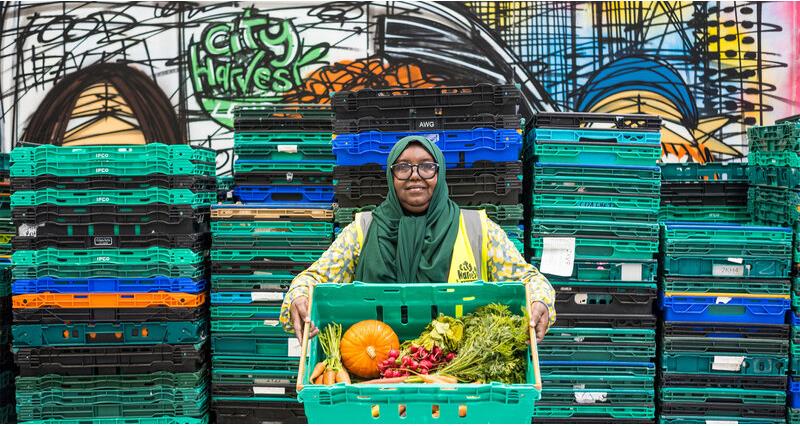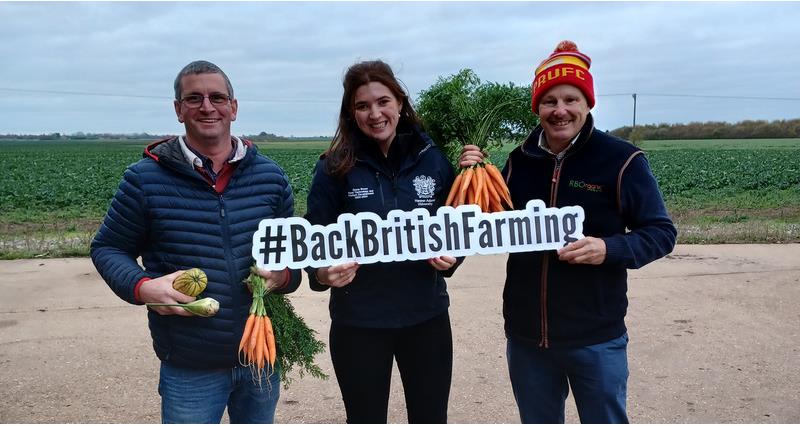For 11 months a year, pumpkins are one of the nation’s least glamorous foods and largely absent from the public consciousness, but come October they are catapulted squarely into the limelight.
From ghost pumpkins and ‘greenkins’ to munchkins and jumbos, the range of pumpkins produced for Halloween has exploded in recent years as the American cultural phenomenon has increasingly gripped the UK.
For growers, it’s all about hitting that all-important October supply window and hoping the weather allows for a bountiful crop – something that was sorely missing during the drought of summer 2022, when supply struggled to keep up with demand.
This year, production appears more reliable, and while growers are hoping for a little more sun over the next few weeks, quality and volumes look set to be holding up well (so far!).
At Foxes Farm Produce in Colchester, Essex, husband-and-wife team Guy and Emily French believe making the pumpkin production business fun has benefits for everyone.
Pumpkin picking appeal
The Frenchs plant 25 varieties of pumpkins, squash and gourds, producing thousands every year, primarily for the wholesale market, as well as theme parks, other pumpkin patches and farm shops.
Foxes Farm Produce runs a pick-your-own pumpkin patch that offers families an enjoyable day out, with hot and cold drinks, ice cream stalls, a bar, and events laid on as kids and their parents get the chance to select and take home the pumpkins of their choice.
“People are becoming a bit more adventurous and interested in seeing where their food comes from,” says Emily. “The fact that they can buy it directly from the farmer, and directly from the field, has an appeal factor.”
“People are becoming a bit more adventurous and interested in seeing where their food comes from. The fact that they can buy it directly from the farmer, and directly from the field, has an appeal factor.”
NFU member and pumpkin grower Emily French
Despite their vegetable-like appearance and usage, pumpkins are actually a fruit, on account of the fact that they are grown on the vine of a flowering plant. They are Cucurbitaceae, a family of plants that also includes cucumbers and melons.
When it comes to growing the crop, pumpkins are planted in May and ready to harvest in late August or September and, for a product that is 90% water, adequate rainfall is vitally important.

“We make sure the soil is ready and that it’s got a good seedbed, and then we plant the seeds into the soil,” Emily explains. “We then hope for rain. Pumpkins grow on top of the soil, as they are vining plants. After a couple of months, there are loads of leaves, loads of vines, and then the pumpkin fruit.
“A kind of orangey-yellow flower is produced off the pumpkin, which is the non-pumpkin producing plant. The sprout that doesn’t have the flower turns into a little pumpkin that will grow and grow.”
Pumpkins were first recorded as far back as 5,000BC, but it wasn’t until New World explorers brought them back to Europe in Tudor times that they became familiar in this country.
Pumpions, as they were known at that time, became popular as a pie filling and, indeed, pumpkin pie was said to have first appeared as an established dish in the 17th century.
Did you know...?
Pumpkins take between 90 and 120 days to grow and each fruit has about 500 seeds.
Fast forward to the 2020s and as many as 15 million pumpkins are grown in the UK every year. As well as for the Halloween carving market, retailers have been reporting growing interest in edible pumpkins as consumers become more adventurous and incorporate the fruit not just in soups and pies, but bread, chilli, teas and a variety of other autumn dishes.
While the edible side of the sector is seeing pleasing growth, the extent to which Halloween dominates the sales market for pumpkins cannot be underestimated.
“Come 1 November, I can’t really give them away for love nor money,” says Emily, who adds that any leftover pumpkins are given to a gleaning charity for redistribution to soup kitchens.
Every year it seems that retailers have some unusual new variety of pumpkin to showcase, and that’s a reflection of the fact that breeding innovation is alive and well. Emily points out that her farm is growing knobbly Goosebump pumpkins, Turban squash – named for its resemblance to the headdress – and a range of other gourds in shapes as unusual as swans and pears.
There are not many crops that have as guaranteed a market as the one that pumpkin growers enjoy, and at a time of such market volatility and uncertainty on the farm, that makes them a very valuable product indeed.
This article first appeared in the November 2023 edition of Countryside Magazine. Find out how to subscribe.



